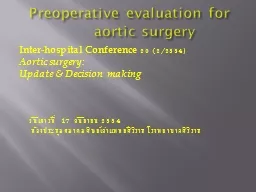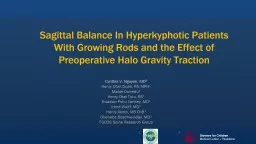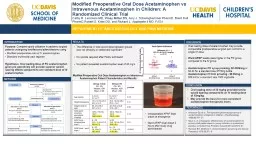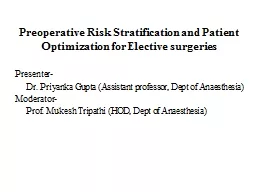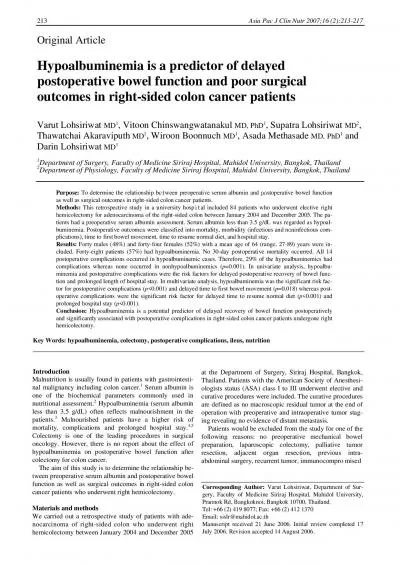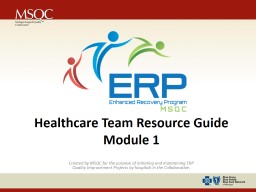PPT-Preoperative evaluation for
Author : yoshiko-marsland | Published Date : 2015-12-01
aortic surgery Interhospital Conference 20 22554 Aortic surgery Update amp Decision making วน เสารท 17 กนยายน 2554
Presentation Embed Code
Download Presentation
Download Presentation The PPT/PDF document "Preoperative evaluation for" is the property of its rightful owner. Permission is granted to download and print the materials on this website for personal, non-commercial use only, and to display it on your personal computer provided you do not modify the materials and that you retain all copyright notices contained in the materials. By downloading content from our website, you accept the terms of this agreement.
Preoperative evaluation for: Transcript
Download Rules Of Document
"Preoperative evaluation for"The content belongs to its owner. You may download and print it for personal use, without modification, and keep all copyright notices. By downloading, you agree to these terms.
Related Documents

